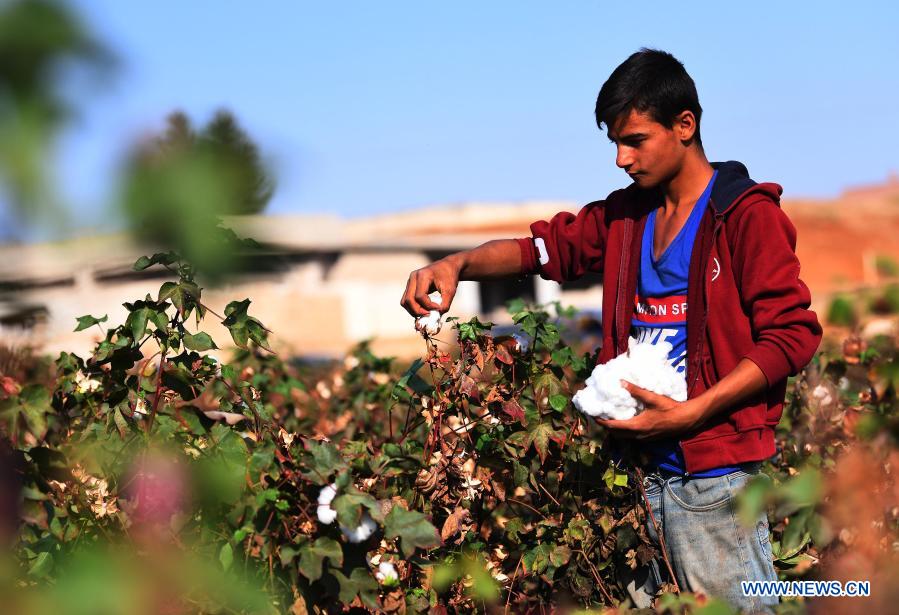
A worker collects cotton at a cotton farm in Hama province, Syria, on Oct. 26, 2020. (Photo by Ammar Safarjalani/Xinhua)
HAMA, Syria, Nov. 24 (Xinhua) -- In a farmland of the central Syrian province of Hama, farmers were bustling around, busy picking the white cotton and pack it in sacks before heading to the government-run cotton gin to sell it.
A handful of workers were busy collecting the cotton off from their branches, while a farmer, who owns the land, was standing on a high place observing the work under the balmy fall sun.
Each worker has a sack in his hand to put the cotton in before taking them to a pickup truck where they empty their loads.
Mefleh al-Asheq, the landowner and farmer, told Xinhua that this year is the first in eight years to plant his land as the area was out of the government control.
Al-Asheq, whose family has been planting cotton for 80 years, hoped this year's crops will be good enough as a new start after all these years of war.
"We were able to enter this land and plant it with cotton crops and I hope the harvest will be good and benefit all of us this year," he said.
However, returning to the land and start planting it is only the beginning. Al-Asheq said there are obstacles facing cultivating cotton, the first of which is the low price.
Recently, the government set the price of one kilogram of cotton at 700 Syrian pounds but this price didn't resonate with farmers, including al-Asheq.
He told Xinhua that half of the proposed price goes for workers who collect the cotton, let alone the price of fuel and fertilizers.
He noted that planting cotton is a long and expensive process as it needs securing initial materials such as seeds, fertilizers, and fuel, and when these materials are available at reasonable prices there should be good crops.
"We demand an increase in the prices of cotton to be equal to the realistic cost in real life and to be enough to sustain the farmer. So, there should be a balance between the situation where we support the farmer and to get the economic benefit of the cotton, which we call the white gold," he said.
As it is now, the situation is still difficult as "we cannot move on like this it won't be enough economically," he said.
For his side, Kamal Sawaf, director of the Mhardeh cotton gin in Hama, drew a brighter image, saying the harvest this year is much better than last year's.
He said his gin received so far 2,600 tons in 2020, 2,300 of which are from the eastern province of Deir al-Zour and 300 tons from Hama. Last year, the gin received 700 tons only.
Sawaf said the difference is clear thanks to the return of farmers' lands as a result of the return of peace and security to the formerly rebel-held areas.
Sawaf said the cotton crop is an agricultural, industrial and social crop, noting that 20 percent of the Syrian population worked in harvesting cotton before the war.
"Hopefully, in four years' time, the cotton cultivation will return to what it used to be before the war," Sawaf said. Enditem



